|
There are times when thoughts crash together to make a whirlwind of sense. Tonight, walking the dog down a moonlit country road, was one of those times. The moon is always facing the Earth the same way. Now, I haven't been able to find much on the odds against this being the case, but I did find a Forbes article on the probability of the moon being as it is at all: www.forbes.com/sites/brucedorminey/2015/06/27/earth-moon-combination-is-likely-very-rare-study-confirms/ You won't find much out there to answer the question of odds. You'll find some stuff about rotation, some arguing that it wasn't always this way, some saying it's gravity. But the actual odds on finding yourself with a moon that always faces (a face, to boot!) towards its planet, well. Well before that line of inquiry everyone seems to draw a line. Howsoever this may be, there's talk of the moon ringing like a bell when something large and metallic like a space probe is crashed into it, on which NASA goes into flights of fancy about moon bases that have to be built to withstand 'moonquakes' on the strength of these astronautical findings. Ask your search engine, "why does the moon ring like a bell," and you will find echoing back to you no answers at all. Not a single one. The moon shines by reflecting photons from the sun. The surface of the moon from which these photons bounce has a quality that gives an eerie white, bright light, and curious to know if our moon is peculiar in this respect, I was surprised to again find no answer to the simple question, "is our moon brighter than most?" But it is the fifth largest of the 190 (or so) moons in our solar system. There are a lot of moons in our solar system, so they are not uncommon things. The other planets in the solar system, however, are lifeless (at least by comparison), positioned as they are beyond the Goldilocks Zone. I'd hazard a guess that Mars has been here and Venus is set to arrive next, but at the time of writing, Earth alone occupies the narrow band of life-support promised from the sun. Promised, that is, if the planet hosted therein has the resources necessary to sustain hosts of its own. Fair to say we're doing a pretty poor job of planetary husbandry. "Could do better," would be written on our Report. Meanwhile, as we scrabble for solutions nobody's taking any notice of, designs like this are appearing on our rural floors with persistent regularity: ...to be met with complaints from farmers over lost cereals and declarations of vandalism by people with planks. Some of these designs are beyond general comprehension, and most would take weeks to complete, were the technology available to alter plant stems this way. Machinery would be necessary, you couldn't reach such precision with sticks and bits of string; as for laying the pattern, planks strapped to people's feet just wouldn't cut it. And nobody's been caught in the act, bar a few little lights skipping around being unidentified. Just ask your search engine for "balls of light around crop circles" - you'll be presented with a wide choice of video footage. As a final shout on the crop-formation front, there's this one: http://secret-teachings.blogspot.com/2008/02/doors-of-perception.html The story cannot end there. Designs such as these give hints, if not direct references, to developmental progress and means of obtaining global traction. But they are not being researched or investigated in this way and their geometry is not being analysed; the inherent code within them goes undeciphered while professionals dismiss these vast images as the work of pranksters.
To incorporate the degrees of precise relativity featured in these designs, they would have to be mapped from above. Fine detail within each section of illustration is achieved by laying stems at exact angles to each other; overall, given the size of the vista, this effect could not possibly be made as perfect as it is without visual appraisal at height and a lot of complex mechanics. Is someone trying to tell us something? Should we not be following up on what that might be? Do we really have that much time to waste on constant Plank theories?
0 Comments

Now's the time to sit back and see how far we've come. This image - and the post behind it - hark across the 100 years to pass since quantum mechanics came into our realm, when a handful of minds cooked up analogies from arithmetic that would change the course of history, eventually bringing us the LHC and God Particles.
Fifty years ago Hawking and Penrose were delving into territory that many found too mystical to swallow. They were looking at black holes full of information paradox, and figuring out how a singularity could work. They wanted to know what lay at the back of physics, beyond the point where physics didn't exist any more, and using that familiar brickbat the Photon, they plunged into the event horizon to find that it might not look at all as they'd imagined. In fact looking at it in the first place needed the help of photons. https://www.bbc.co.uk/news/science-environment-54439150 Having just won the Nobel, Penrose deserves a bit of credit. At 89, he's well worthy of the accolade, but his thoughts still meet high walls in the halls of academia, where consciousness is a dirty word and anything alluding to it is Woo. The brickbats of Light in any other context would illuminate a lot of ground, physical and metaphysical, were it to be given the time of day, which presently it's not. 
Cora is a woman who also delves into black holes. Her thoughts on the matter, while equally evocative, seem to provoke more than elucidate since a tendency of the human mind is to resist change, particularly within itself where illusions quietly incubate carbuncles of untruths.
Unknown is not untrue, it's simply unproven to be so; in time it would be natural for Nature to unburden herself of Truth; she may already have done in a quark teamed up naturally with Beauty. What we do not know is more tantalising than what we do know, for we are explorers by nature, seeking answers of Creator while thinking for ourselves, questing for a path of sense mapped by a heart given to follow. That each of those quests is individual comes as no surprise, for we know about uniqueness of snowflakes and sand. We know that there will be asymmetry, for there is a difference, however small and imperceptible, between everything that exists in relation to everything else. Here, uncertainty comes into its own. This is a principle preventing symmetry from ordering the Universe.
The principles of physics are on uncertain ground. Brick walls are everywhere, often in infinities, plaguing maths made of symbols that are not enough, not any more, to describe the incredible energy flux that continuously permeates the quantum world. The state of matter is under attack from waves that threaten to be everything, looped in strings or turning gravity to vertigo. The Uncertainty Principle needs another visit. But it's not in any rush, even if we are.
Take a look at the Home Page while you're waiting. Join us on Facebook if you're there.  100 years have passed since the quantum realm was first breached by these physicists, who worked together without the technology we take for granted now. Televisions had just been invented. Telephones were in early stages of development, with the first transatlantic call being made in 1927. They relied heavily on letters and meetings in person. They worked tirelessly on problems in their own institutions. And finally they came to a grinding halt with a unilateral verdict that quantum mechanics was not to be fully understood and if it ever was, it would transform physics beyond recognition. 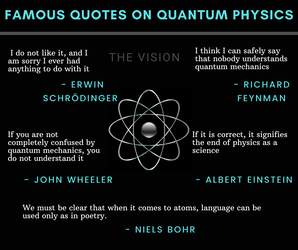 Here in 2020, we are barely out of the mist. Vast, expensive experiments like the LHC and Super-K have been created to test, trap and interpret the movement of sub-atomic particles, bringing data agreeing or not with 'expected parameters', that's most often seen to follow a bell-curve close to the predicted line. But there's a stumbling block, one that moves unseen through marble halls and sticks to academia like wit to a blanket... a block people talk about but somehow fail to see as such, patting it reassuringly with a fondly held belief that it should somehow be there. Confirmation bias is prevalent in physics because this is a science reliant on equations. In the early 1900s, equations created to describe quantum mechanics adopted codes taken from ancient Greek, among other sources, as new thoughts led to new symbolism for the new particles, forces and factors being brought to light. While these updates in language were arising, prejudice against the unknown ran rife, and much store was set by any constant or constraint that could be identified as limiting what particles could do. Quantum mechanics was squeezed into a box, from which it had little chance of escape. So it firmly said, instead, that nobody would ever understand it. The atom itself is a case in point. The image sitting amid the quotes above is a classical view of what an atom would look like, with electrons neatly orbiting a tidy little nucleus tucked in the centre. This view has been trawled through a grinder by the Uncertainty Principle, a wide-ranging (but commonly constrained) tour de force that prevents anything from being exactly anywhere, and may also prevent the same thing ever happening twice (hence uniqueness in snowflakes and grains of sand). So these days, the atom is viewed as a fuzzy groupage of indeterminables, except in the number of electrons, protons and neutrons contained within it. These components of sub-structure are all subject to continuous change. Electrons jump up and down in energy levels (via interaction with photons), protons and neutrons are interchangeable, and the quarks they are comprised of turn from one 'flavour' and 'colour' to another in a constantly shifting sea of mass that is impossible to pin down. So far, so good. Things have not so much become clearer, as become less tangible. 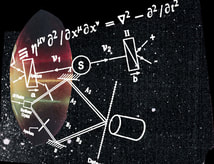 We've reached a point now wherein physicists are preparing themselves for New Physics, and many are exploring depths never before plumbed - into the realms of consciousness and what constitutes the bedrock of our indeterminable reality. Their theories and findings are still hard-hit by confirmation bias, meeting the battle-cry of "Woo, it's all Woo," with swords from a sheath of "pseudo-science" readily drawn against an onslaught of unknown variables. Impeccable pedigrees, PhDs and peer reviews appear to be no protection against Trolls, declaring themselves as guardians of all that's respectable in the world of quantum mechanics, even though that world is largely comprised of uncharted territory in very deep waters indeed. What do you see, beyond the smoke and mirrors? Come and join the Group to discuss. |
AuthorKathy is the author of Quantumology. She met up with quantum mechanics in 1997, pledging allegiance to its sources thereafter. These are her personal thoughts and testimonies. Archives
April 2023
|

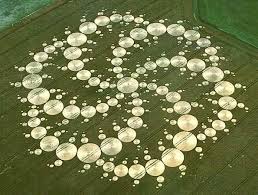
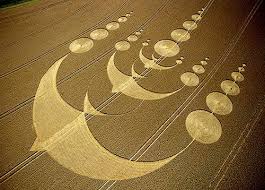

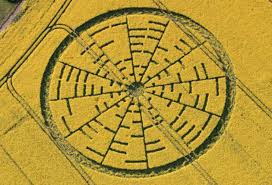

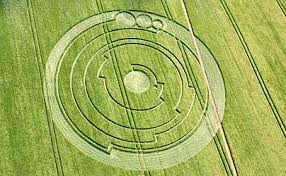

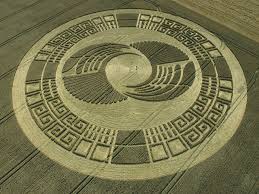
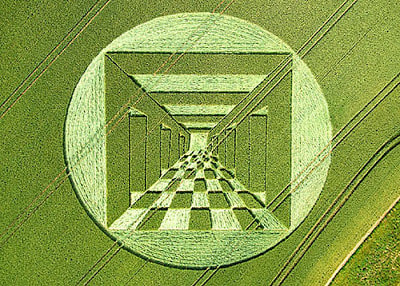
 RSS Feed
RSS Feed